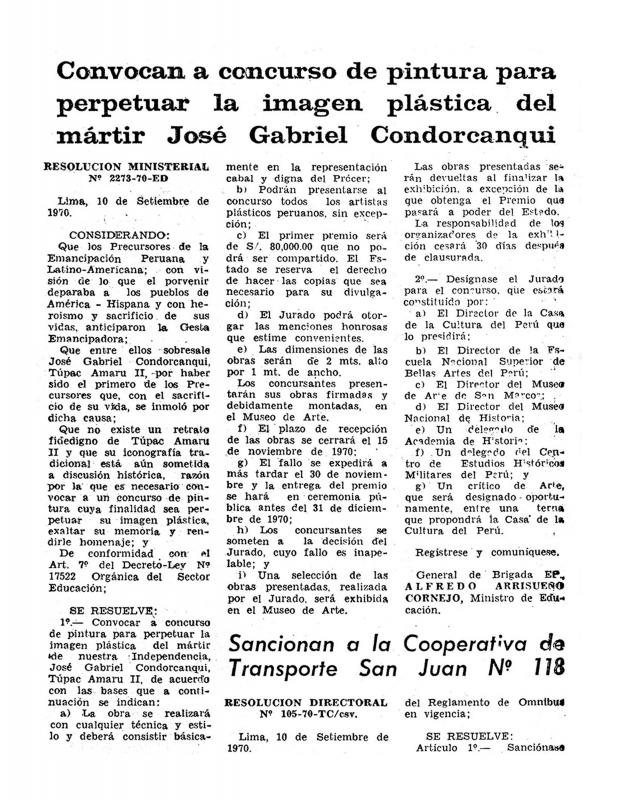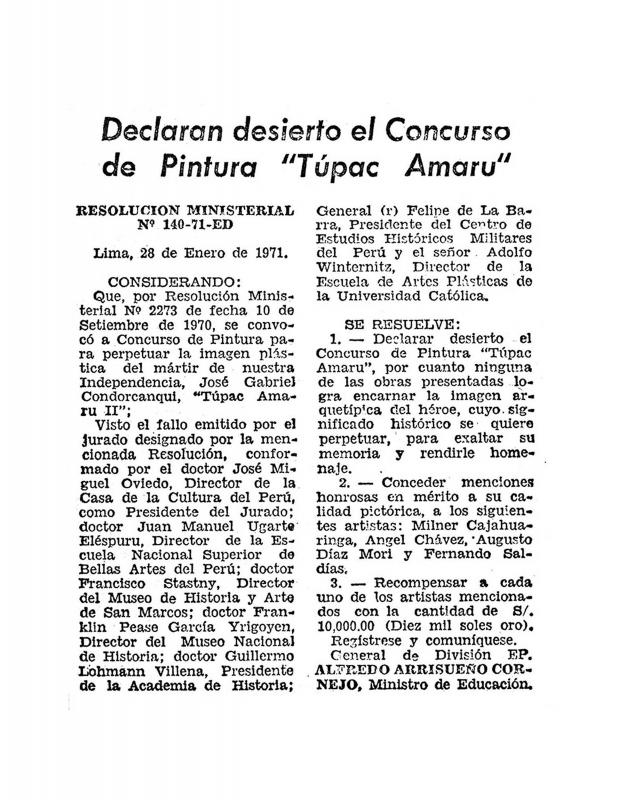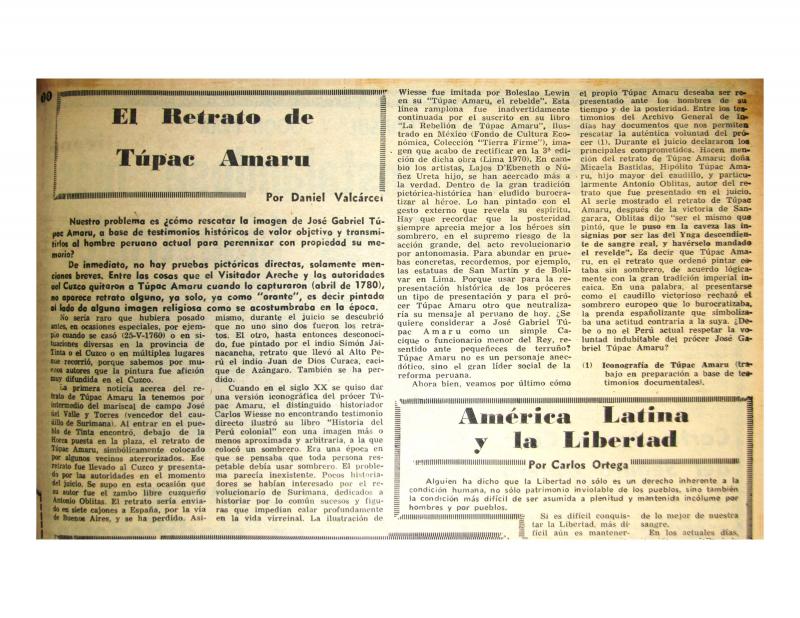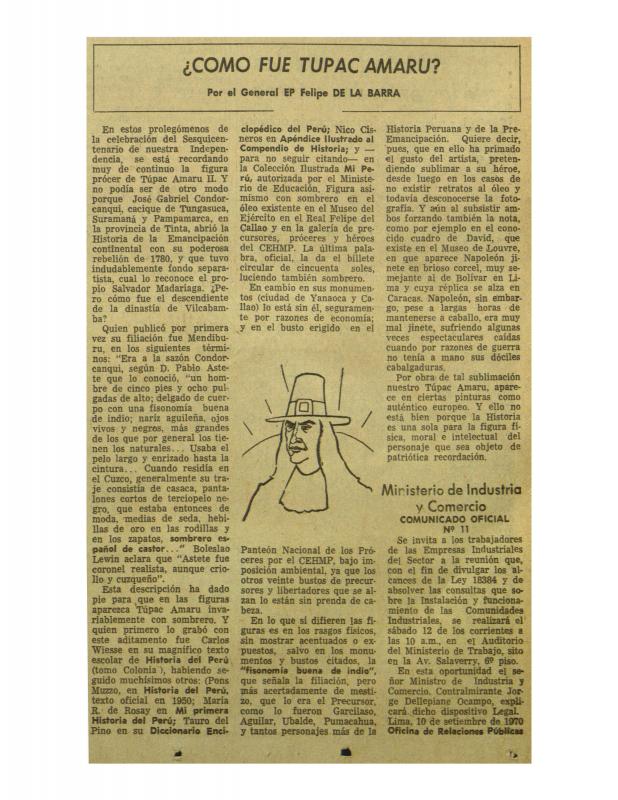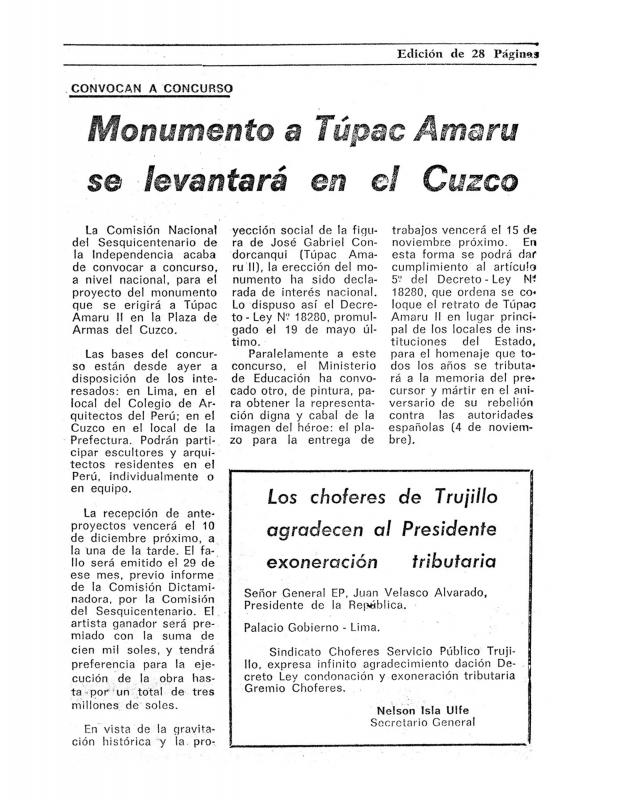José Gabriel Condorcanqui, Túpac Amaru II (1738–81), was a curaca or chief of Incan descent who, in 1780, led the most important Andean uprising against the Spanish empire. Largely ignored by traditional Spanish American historiography, his figure was the emblem of the so-called Gobierno Revolucionario de las Fuerzas Armadas during its first phase (1968–75), which was characterized by social reform and by an interest in symbolic representation. The lack of portraits dating from the lifetime of the indigenous leader led to the organization of this competition [see in the ICAA digital archive by Alfredo Arrisueño Cornejo “Convocan a concurso de pintura para perpetuar la imagen plástica del mártir José Gabriel Condorcanqui” (doc. no. 865422)], whose jury included leaders of almost all the art institutions in Peru. The polemic nature of the competition was heightened by the dramatic decision not to award any of the works submitted [see also by Alfredo Arrisueño Cornejo “Declaran desierto el Concurso de Pintura ‘Túpac Amaru II’” (doc. no. 865498)]. Milner Cajahuaringa (1932–2017), one of the four painters awarded an honorable mention, publicly renounced that recognition in this letter. A second competition was proposed, however, it was never held.
For both the sketches and the painting he submitted, Cajahuaringa consulted historian Daniel Valcárcel. The works show the forefather of independence standing on a plateau and wearing an “unco,” the typical Incan attire [see by Daniel Valcárcel “El retrato de Túpac Amaru” (doc. no. 1052165)]. Paradoxically, the image of the face in Cajahuaringa’s work was used repeatedly at the rallies organized by President Juan Velasco Alvarado. Years later (in 1988), the Movimiento Revolucionario Túpac Amaru (MRTA) embraced that image as its emblem.
[For further reading on Túpac Amaru II, see the following articles in the archive: by General EP Felipe de la Barra “¿Cómo fue Túpac Amaru?” (doc. no. 865441); (unsigned) “Convocan a concurso: monumento a Túpac Amaru se levantará en el Cuzco” (doc. no. 1053438); (unsigned) “En busca de la imagen arquetípica de Túpac Amaru” (doc. no. 865702); and by A. O. Z. “Túpac Amaru: ¿verdadero retrato?” (doc. no. 865460)].

